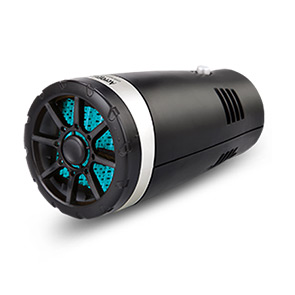Tips for Properly Adjusting Your Throttle Cable for Optimal Performance
Adjusting the Throttle Cable A Comprehensive Guide
The throttle cable is a crucial component in many vehicles, particularly in motorcycles and older cars. It serves as the link between your accelerator pedal or handlebar and the engine’s throttle body, controlling the amount of air and fuel mixture that enters the engine. Proper adjustment of the throttle cable is essential for optimal engine performance, responsiveness, and fuel efficiency. In this article, we'll delve into the process of adjusting the throttle cable, why it’s important, and some common issues that may arise if it’s not done correctly.
Understanding the Throttle Cable
Before we jump into the adjustment process, it is important to understand what the throttle cable does. When you press the accelerator pedal or throttle grip, the cable pulls on the throttle plate in the engine, allowing more air to enter. This increases the engine's RPM (revolutions per minute) and ultimately boosts the vehicle's speed. If the throttle cable is too loose, the throttle may not fully close, leading to hanging revs or poor performance. Conversely, if it is too tight, it may cause premature wear or even stalling.
Signs That Adjustment is Needed
There are several indicators that your throttle cable may need adjustment
1. Unresponsive Throttle If you notice that your vehicle does not respond as quickly as it should when you press the accelerator, it might be time to check the cable.
2. Inconsistent Idle When starting your vehicle, if the RPMs bounce or fluctuate inconsistently, this could signal an issue with the cable tension.
3. Sticking Throttle A sticking throttle can occur if the cable is frayed or kinked, which prevents it from operating smoothly.
Tools Required for Adjustment
adjusting throttle cable

Adjusting the throttle cable is fairly straightforward, but you will need some basic tools
- Wrenches or pliers - Screwdriver - Ruler or measuring tape (for precise adjustments) - A cleaning cloth for maintenance
Steps to Adjust the Throttle Cable
1. Prepare the Vehicle Start with the engine off and let the vehicle cool down. This will prevent any burns or injuries during the adjustment process.
2. Locate the Throttle Cable Usually, the throttle cable is found near the accelerator pedal or throttle grip, and it should lead to the engine's throttle body.
3. Check Cable Tension Press down on the accelerator pedal (or throttle grip) and check the amount of slack in the cable. There should be a small amount of free play—typically, around 1/8 to 1/4 inch. Too much slack means the cable needs tightening.
4. Adjust the Cable Locate the adjustment screw, which is often found near the throttle body. This can also be located at the opposite end near the accelerator. Depending on whether you need to tighten or loosen the cable, you may need to turn the screw clockwise or counterclockwise. Make small adjustments, checking the tension frequently.
5. Test the Throttle After making the adjustments, press the accelerator pedal slowly to ensure it responds without sticking. Once satisfied, start the engine to see if the vehicle idles smoothly without fluctuating.
6. Final Checks If the throttle is still not responding well, you may need to inspect the cable for any damage. If necessary, replace it before continuing to adjust.
Conclusion
Properly adjusting your throttle cable can significantly improve your vehicle's performance. Regular checks and adjustments are vital, especially for older vehicles that may experience wear and tear over time. If you're unsure about any step in the process, consulting a professional mechanic is always recommended. By taking the time to ensure your throttle cable is in optimal condition, you'll enjoy a smoother driving experience and better fuel efficiency.
-
Workings of Clutch Pipe and Hose SystemsNewsJun.04,2025
-
The Inner Workings of Hand Brake Cable SystemsNewsJun.04,2025
-
The Secrets of Throttle and Accelerator CablesNewsJun.04,2025
-
The Hidden Lifeline of Your Transmission Gear Shift CablesNewsJun.04,2025
-
Demystifying Gear Cables and Shift LinkagesNewsJun.04,2025
-
Decoding Clutch Line Systems A Comprehensive GuideNewsJun.04,2025
